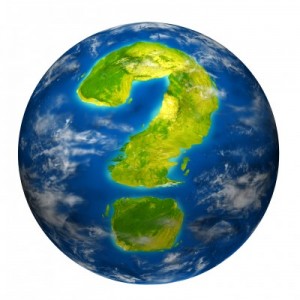26,000 Year Changes
Q: After a little reading from an abstract from the Science Magazine article The Earth’s Tilt Change, 2003 Global Climate Change by Karl and Trenberth, they wrote that
orbital forcing is due to the following: Insolation, Precession, and
Eccentricity (E).
The text says that the effect of the slow 26,000 year+
changes are due to the interaction of the Sun and Moon, equally. This article
also says the interaction is due to Jupiter and Saturn.
Which is it?
I know that the knowledge is sometimes unavailable.
How Jupiter Influences Earth
A: What an excellent question. Thank you for sharing your thoughts. Research “precession” on the Internet and this will enlighten you quite a bit. Precession is one of the most critical Earth movements, yet one of the least studied.
The Earth revolves around the Sun at very rapid speeds, completing approximately 365.25 turns on its axis while it orbits the Sun at a speed of 67,000 mph. The Earth spins on its axis every 24 hours, turning at 1,035 mph at the equator and decreasing in speed closer to the North and South Poles. The speed of rotation at the North Pole is so slow, it is almost no speed at all.
Rotation changes the Earth’s shape from a perfect sphere to slightly flat at the poles and slightly bulging at the equator, with an equatorial diameter about 43 kilometers (27 miles) larger than its polar diameter. Spinning at incredible speed, the equatorial bulge causes the Earth to wobble, like a toy top. The influences of the Sun and the Moon on the equatorial bulge makes the Earth wobble all the more, and this is called precession.
The solar system spins, the galaxy spins, and the Universe expands. The motion of every orb in our solar system affects the whole, and when a shift takes place with one orb, the entire cosmic equilibrium is shifted, too. A comet could pass too close to Jupiter, let’s say, and rock it or alter its equilibrium, which will set off a vibration felt throughout the solar system. Even if it’s a minor “push”, the other planets will respond. A mere tip of our Earth’s axis is minor in solar system standards, bu, this is a major shift to the circulation patterns on the Earth. Just a 1/2-degree shift at the geographic poles would alter ALL the wind and ocean currents on Earth, and this changes ALL life on our planet. These climate changes are minor on a cosmic scale, but MAJOR to all life on Earth.
On March 11, 2011, the poles became critically unstable and the Earth’s speed of rotation increased with a jerk-like motion. This acceleration caused one of the largest earthquakes in recorded history to hit off the east coast of Japan. Because the Earth’s circle of rotation is now widening at the poles and the speed of rotation is erratic, this polar shift redistributed the Earth’s mass and shifted the Earth’s crust. Because the Earth is big – very big – the earthquake in Japan was actually a tiny movement.
As you are witnessing today, the Earth – climate, earthquakes, volcanoes, and flooding – have NEVER been the same since the 9.0 magnitude earthquake in Japan on March 11. 2011. The Earth IS changing, and now you can better understand how Jupiter can influence our planet.


